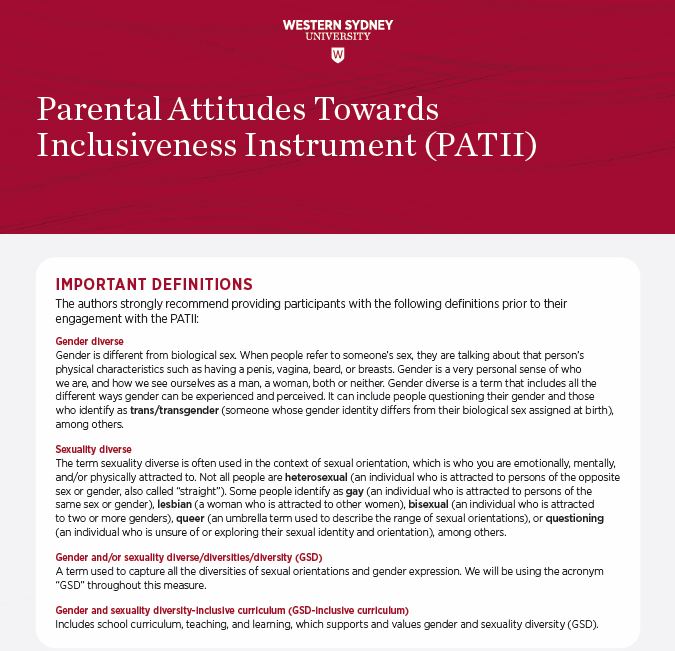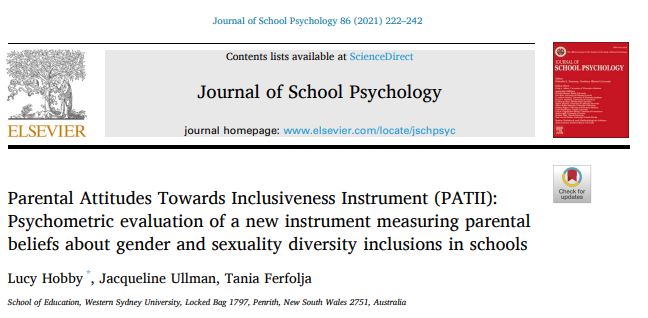Measurement Instrumentation
PATII Measure
| Ullman, J., Ferfolja, T., & Hobby, L. (2021). Parental Attitudes Towards Inclusiveness Instrument (PATII): Items, Factors and Scoring Instructions. Penrith, Australia: Western Sydney University. |  |
This document provides the original “Parental Attitudes Towards Inclusiveness Instrument” (PATII) in full, which measures eight factors including groupings of supports and barriers to the curricular inclusion of gender and sexuality diversity. This document provides factor groupings and instructions for use, including scoring for first-order and higher-order factors.
PATII Scholarship - Peer Reviewed Papers
This paper outlines the development and initial testing of our new, multidimensional measure of the theorised nature of parental attitudes towards inclusiveness, the “Parental Attitudes Towards Inclusiveness Instrument” (PATII). Working with a pilot sample of 998 parents with a child attending school in any grade from Kindergarten to Year 12, the PATII was evaluated for its reliability, construct and criterion validity, and measurement invariance utilizing exploratory structural equation modelling (ESEM), with initial ESEM analyses also compared to traditional confirmatory factor analysis (CFA) methods. Factor scores were reliable, valid, and invariant across sex, religiosity, and nationality groups within this sample.
Ullman, J., Hobby, L., & Ferfolja, T. (Forthcoming, in preparation). Parental Attitudes Towards Inclusiveness Instrument (PATII): Revalidation in a Nationally Representative Australian Sample. |
This paper will detail the process of revalidation of the PATII instrument with our national sample of Australian parents of children attending government schools. Revalidation confirmed two higher-order factors (“supports” and “barriers”), each with a group of corresponding first-order factors. Factor groupings are as follows:
Higher-Order Factor: “Supports” [includes first-order factors: “Oppression”; “Wellbeing”; “Equality”; “Personal Importance”]
Higher-Order Factor: “Barriers” [includes first-order factors: “Religious Values”; “Suggestibility”; “Appropriateness”]
Stand alone, first-order factor: “Parental Capability”

